Applications of Magnetic Carriers
May 20 - 22, 2004
Lyon, France
Lyon is the second largest city in France and the capital of Rhone-Alpes Region. Larger Lyon has a population of nearly 2 million inhabitants. Lyon's universities, research laboratories and textile, chemical, pharmaceutical, mechanical and biotechnology industries make it the biotechnology hub of the entire France. The following maps should make it easy to find Lyon in the heart of Europe.
The airport in Lyon is called Lyon Saint-Exupery International Airport (symbol LYS). The Satobus company leaves every 20 minutes from the airport to downtown Lyon. Get a "Rhone pass" for 9.30 Euros and get off after about 30 minutes at the train station (= gare) Lyon-Part-Dieu. From there, take the bus 47, and get off at the stop "Place Antonin Perrin". The two hotels are now very close. The Rhone pass includes both bus rides.
Another route to take would be to fly either to Paris or Geneva, and then take the train (2 hours by TGV from Paris, about 1 hour from Geneva, Switzerland). There are two train stations which are stops for the rapid train (TGV) and are both fine for coming to our meeting:
- Lyon-Part-Dieu. From there, take the bus 47 and exit at the stop "Place Antonin Perrin".
- Lyon-Perrache. From there, take the metro line B and exit at the stop "Gerland Debourg". If you prefer the bus, take the bus 32 and exit at the stop "Halle Tony Garnier".
There is a map that shows the meeting location ("Grand Amphitheatre") in the Ecole Normale Superieure de Lyon, together with our two meeting hotels. But careful: The Novotel is in there with its old name "Mercure" (H1), the Ibis Gerland is just called Ibis (H3).

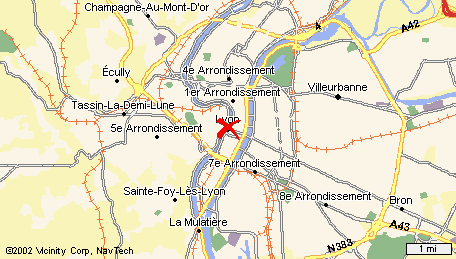
The meeting will take place in the state of the art Grand Amphitheatre of the Ecole Normale Superieur de Lyon, a famous technical Unversity. Download or see the map of the university here.
The Lyon Convention and Visitors Bureau has a lot more information: http://www.lyon-france.com/pages/en/.
Gastronomy
Since the 16th century, Lyon's cuisine has delighted many a customer in its "bouchon" bistros and in its first restaurants. These palate-pleasers will never disappoint and the traditional tastes remain intact. Lyon's cuisine owes its virtuosity first of all to the quality of local produce. The farms of the Bresse and Charolais regions, the wild game of the Dombes, the fish from the Savoy lakes, the fruits and vegetables of the Rhône valley and the Forez region are all within easy reach and supply the essential ingredients for Lyon's famed cuisine. The local culinary specialties are plentiful and varied: pork products and "cervelle de Canuts" soft cheese with herbs, "bugnes" beignets, fried pork fat, Lyonnais salad, "tablier de sapeur" tripes, "gras double" tripes, "petit salé" ham with lentils, "quenelles" dumplings (a mixture of butter, semolina and fish), black pudding, "andouillette" chitterling sausage, "paillasson" fried hashed potatoes, and more, if you're still hungry!
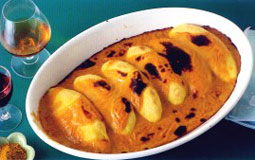 |
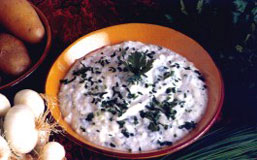 |
But cooking is promoted to the rank of gastronomy when man adds imagination and a master's touch. Rather, we should say, woman, for in Lyon it is the "mothers", those famous robust cooks, who gave Lyonnais cuisine its very special character and who invented the 10 a.m. "mâchon" snack which was a welcome break when the working day had started at dawn. The first of these mothers was Mère Guy, followed by Mère Filloux and Mère Brazier, who practised their art at the beginning of this century, pleasing the palates of the most important personages of their time. Today, men uphold the tradition and many local 3-star restaurants (awarded by the Michelin Guide) carry the banner of Lyonnais cuisine throughout France and the world. You'll have a meal to remember, be it with the great chefs or in the humble "bouchons", these small traditional restaurants with picturesque interiors, serving local pork dish specialties, copiously washed down with bottles of Beaujolais or Côtes du Rhône wine. The immortality of Lyon's culinary know-how is guaranteed not only by the 1000 restaurants which contribute to the inviting and festive atmosphere of the city and the great chefs who are its ambassadors, but also by such initiatives as the Food Trade Exhibition and the School of Culinary Arts and Hotel Management.
Culture
Capital of the silk industry, the Three Gauls and the French Resistance, Lyon claims some thirty museums with permanent collections and frequent exhibitions. Antiquities, paintings, sculptures, drawings, ancient textiles, art objects, furniture, contemporary and classical art, all periods are represented. The wealth of the contents is enhanced by their equally superb settings: an 18th century mansion for the Textile Museum, a 17th century abbey for the Museum of Fine Arts and an archeological site for the Museum of Gallo-Roman Civilization.

Lyon's special affection for nature owes to its geographic situation. Proud of its two hills and two rivers, the city also boasts an extraordinary green belt. No matter what part of town you may be in, nature is always close at hand: the vineyards and golden stones of the Beaujolais are only 20 minutes away; the Monts d'Or, the Monts du Beaujolais and the gentle hills and ponds of the Dombes entice many a visitor.
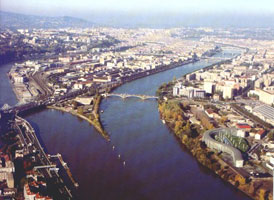
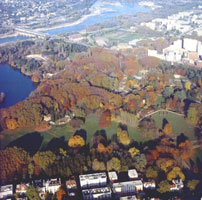
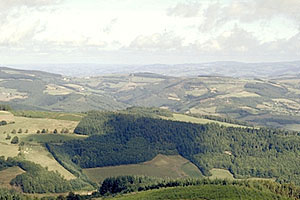
The metropolitan area counts 3 city parks: the Tête d'Or Park, spreading over 105 hectares, with a design inspired by English gardens, has a 16 hectares lake filled by a tributary of the Rhône, a zoo and a botanical garden; the Parc des Hauteurs, which overlooks the city; and the Gerland confluent park created along the banks of the Rhône. A bicycle path runs from here to the other side of the city at the Cité Internationale. On the outskirts of the city, just a few minutes from the centre, the Miribel Jonage Park stands as a leisure zone offering a great number of sports and nautical activities. The Lacroix-Laval Park, property of the Regional Council, is 12 km from downtown Lyon. This 28115 hectares domain has a forest graced with a wide variety of trees, prairie-like expanses, ponds and a river. You'll also find a French-style garden, a farm and a château with a restaurant. One of the main attractions of this park is its Doll Museum in the château, housing a collection of more than a thousand antique dolls, among the most beautiful in the world. The Parilly district Park, located at the city limits of Lyon, Bron and Vénissieux, possesses a hippodrome and attracts a large public to its shaded paths and sports grounds.


 Scientific Program
Scientific Program